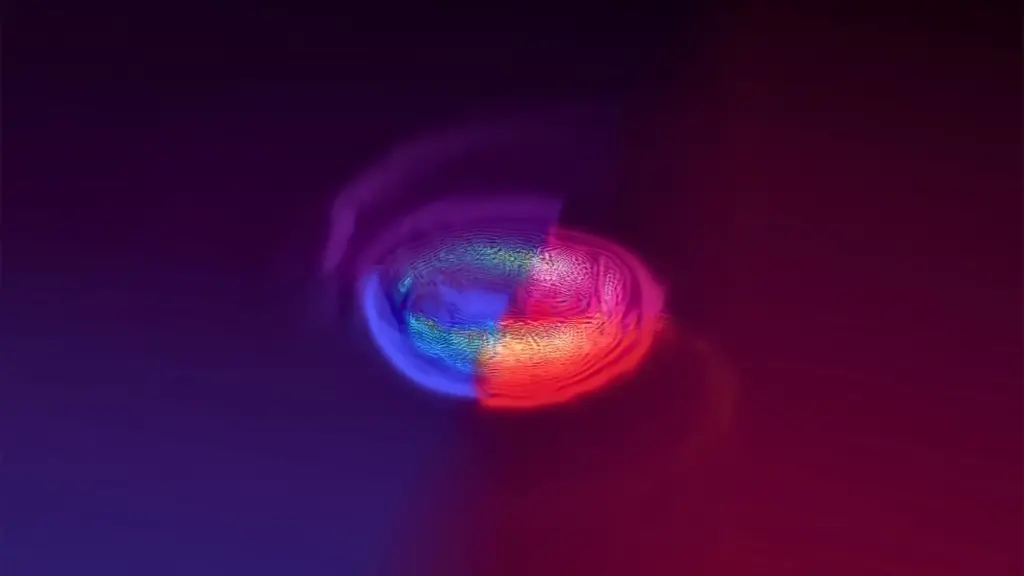
The intricate dance of neutrinos, fundamental particles known for their elusive nature, may hold the key to understanding the cosmic origins of precious metals like gold and platinum. A groundbreaking study published in the journal Physical Review Letters has unveiled the role of neutrino “flavor” transformations during neutron star mergers, a discovery that could revolutionize our comprehension of element formation in the universe.
Neutrinos, which interact weakly with matter, exist in three flavors: electron, muon, and tau. Under specific conditions, such as those found within neutron stars, these neutrinos can change flavors, altering their interactions with other particles. This phenomenon, previously overlooked in simulations of binary neutron star mergers, has now been meticulously modeled by researchers at Penn State University.
Unraveling the Neutrino Mystery
Yi Qiu, a graduate student in physics at Penn State and the study’s lead author, emphasized the novelty of their approach. “Previous simulations of binary neutron star mergers have not included the transformation of neutrino flavor,” Qiu noted. “This is partly because this process happens on a nanosecond timescale and is very difficult to capture and partly because, until recently, we didn’t know enough about the theoretical physics underlying these transformations, which falls outside of the standard model of physics.”
The research team constructed a comprehensive computer simulation, incorporating various physical processes such as gravity, general relativity, hydrodynamics, and neutrino mixing. They specifically focused on the transformation of electron flavor neutrinos to muon flavor, which is deemed most relevant in the context of neutron star mergers.
The Role of Neutrinos in Element Formation
The study revealed that these transformations significantly influence the composition and structure of the merger remnant, including the types and quantities of elements produced. During a collision, neutrons from a neutron star can be ejected and captured by other atoms in the debris, eventually decaying into heavier elements like gold, platinum, and rare earth elements essential for modern technology.
“A neutrino’s flavor changes how it interacts with other matter,” explained David Radice, Knerr Early Career Professor of Physics at Penn State and co-author of the paper. “Electron type neutrinos can take a neutron, one of the three basic parts of an atom, and transform it into the other two, a proton and electron. But muon type neutrinos cannot do this. So, the conversion of neutrino flavors can alter how many neutrons are available in the system, which directly impacts the creation of heavy metals and rare earth elements.”
According to the researchers, accounting for neutrino mixing could increase element production by as much as a factor of ten, providing new insights into the cosmic origins of these valuable elements.
Implications for Astrophysical Observations
Neutrino mixing during neutron star mergers also affects the amount and composition of matter ejected, potentially altering emissions detectable from Earth. These emissions include gravitational waves and electromagnetic radiation, such as X-rays or gamma rays.
“In our simulations, neutrino mixing impacted the electromagnetic emissions from neutron star mergers and possibly the gravitational waves as well,” Radice stated. “With cutting-edge detectors like LIGO, Virgo, and KAGRA, and their next-generation counterparts, astronomers are poised to detect gravitational waves more frequently than ever before. Better understanding how these emissions are created from neutron star mergers will help us interpret future observations.”
Future Directions and Unanswered Questions
While the study has made significant strides, many questions remain about the theoretical physics of neutrino transformations. Qiu highlighted the challenges, comparing the modeling process to a pendulum being turned upside down. Initially, rapid changes occur, but the system eventually stabilizes, though much of this remains theoretical.
“There’s still a lot we don’t know about the theoretical physics of these neutrino transformations,” Qiu said. “As theoretical particle physics continues to advance, we can greatly improve our simulations. What remains uncertain is where and how these transformations occur in neutron star mergers.”
With the infrastructure for these complex simulations now in place, the research team anticipates that other groups will continue to explore the impacts of neutrino mixing. “Neutron star mergers function like cosmic laboratories, providing important insights into extreme physics that we can’t replicate safely on Earth,” Radice concluded.
The study, supported by funding from the U.S. Department of Energy, the Sloan Foundation, and the U.S. National Science Foundation, included contributions from Maitraya Bhattacharyya, a postdoctoral scholar at Penn State, and Sherwood Richers at the University of Tennessee, Knoxville. As the scientific community delves deeper into the mysteries of neutrinos, the potential for new discoveries remains vast and promising.






